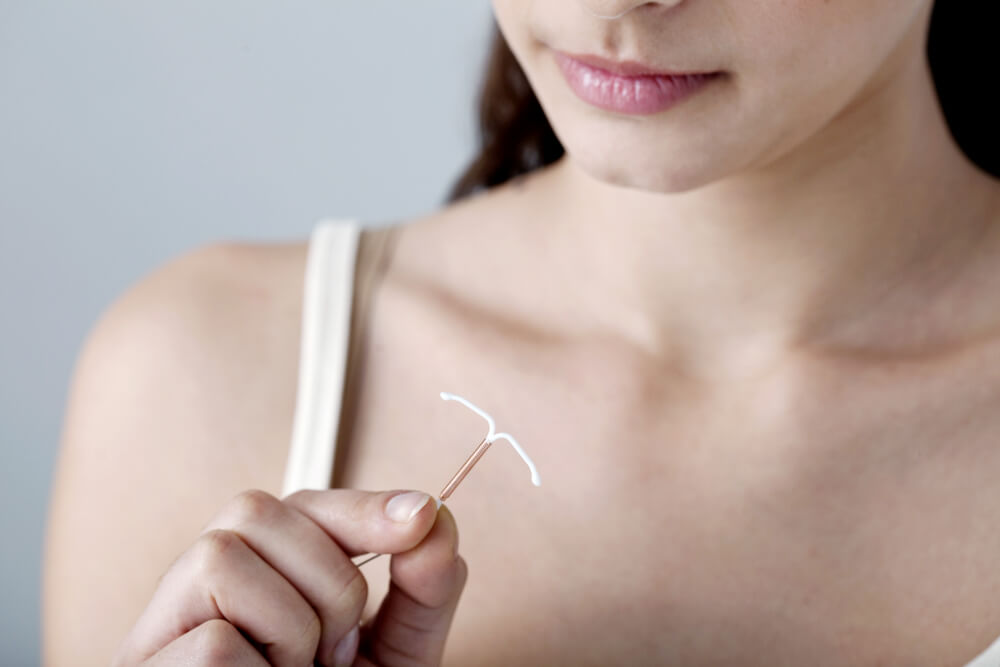An intrauterine device (IUD) is a good long-term option for birth control. Basically, an IUD is a device shaped like a letter T that’s small enough to be inserted into the uterus for pregnancy prevention. In general, there are two different kinds of IUDs, namely those that don’t release hormones and those that do, i.e., a hormonal IUD. The most well-known brand of hormonal IUD is the Mirena IUD. It releases controlled doses of levonorgestrel hormone. If you’re considering getting a hormonal IUD for birth control, keep on reading.
How Does Mirena IUD Work?
Mirena IUD is designed to provide birth control for up to five years. Aside from that, it can also minimize heavy menstrual flows.
Just like birth control pills, this hormonal IUD contains the mentioned levonorgestrel hormone and releases about 20 mcg of it on a daily basis. As it contains 52 mg of the hormone in total, Mirena will have to be replaced after about five years.
As a hormonal IUD, Mirena does several different things in order to prevent pregnancy:
- It thickens the cervical mucus
- It doesn’t allow sperm survival in the uterus
- It prevents the ovary from releasing an egg
- It makes the uterine lining thinner
It’s necessary that a professional manages the insertion of the IUD. Typically, this process should take place within a week of the beginning of your monthly period. Four to six weeks after it’s been first inserted, you will have to come in for a checkup. Afterward, checkups are performed annually.
There’s no need to worry about just how effective Mirena IUD is. It has a 99% rate of pregnancy prevention, which is actually higher than other available contraceptives such as condoms, rings, and pills. When Mirena is inserted to minimize heavy menstrual bleeding, there’s a 90% effectiveness rate after about six months. The IUD is known to reduce the flow by more than a half.
Potential Side Effects of IUD

Mirena side effects are possible, just like it’s the case with any drug. You may not think of the side effects of IUD as your typical medical side effects, but it’s pretty similar to oral hormonal therapy. That said, less serious Mirena side effects may include:
- Placement-related bleeding, pain, and dizziness
- Menstrual flow changes at the beginning
- Stronger cramps and pain during periods
- Headaches and/or nausea
- Acne and/or excess body hair growth
- Tender breasts
- Enlarged ovaries or cysts
- Feeling tired
- Reduced sexual desire
- Hair loss on the head
- Vaginal inflammation
- Vaginal expulsion of the device
More Serious Side Effects of IUD
In case you notice any more serious Mirena side effects, such as the following, make sure to contact your doctor as soon as possible:
- Allergic reactions
- Immediate post-placement infections
- Pelvic inflammatory disease
- Liver problems
- Heart attack and stroke
Uterine perforation and embedment are also some of the more serious Mirena complications. Embedment can be caused by the IUD getting attached to the uterine wall, while perforation happens in case the IUD punctures the wall of the uterus. In both cases, the doctor will have to remove the IUD surgically. Common symptoms associated with these issues include fever and chills, as well as vaginal bleeding and abdominal pain.
Mirena Drug Interactions
Certain drug interactions could also lead to Mirena complications. Essentially, when there’s a drug interaction, the two meds (or one of them) tend to work less efficiently. Sometimes, the effects of these interactions could be dangerous. When you decide to consider Mirena IUD as a birth control option, make sure to disclose all other meds that you’re taking at that moment in order to avoid potential Mirena complications. For instance, common drugs that could interact with Mirena include:
- Herbal products that contain Ginkgo, glucosamine, and St. John’s wort
- Some HIV meds like efavirenz, atazanavir, and ritonavir
- Steroids like methylprednisolone, prednisolone, and prednisone
- Barbiturates like pentobarbital and phenobarbital
- Antiseizure meds like phenytoin, topiramate, oxcarbazepine, and carbamazepine
- Blood thinners like warfarin
- Griseofulvin, felbamate, and bosentan
People affected by certain health conditions have a higher risk of Mirena complications. Some of these conditions include past and current uterine, cervical, and breast cancers, pelvic infections and inflammatory disease, and a generally higher risk of infection. Before you get the Mirena IUD placed, make sure to thoroughly discuss your entire health history with your doctor. Even if Mirena, in particular, may not be a good option for you personally, there are other birth control options available.
How to Prepare for IUD Placement
Before Mirena IUD can be inserted, your doctor will first have to assess your overall health and perform a pelvic exam. It might also be necessary to complete STI testing.
In general, it’s possible to perform the hormonal IUD placement whenever you’re not pregnant, right after terminated pregnancy, as well as almost immediately after childbirth.
In case you have scheduled Mirena IUD placement about seven days after starting your period, don’t forget to keep using other forms of contraception for a week.
You can take ibuprofen an hour or two before the procedure to minimize the cramps.
What to Expect from the Procedure?

During the procedure, your doctor will first clean your cervix and vagina with an antiseptic. Then they’ll use special tools to properly position your uterine cavity and cervical canal and measure the cavity’s depth.
After that, the IUD will be placed inside the applicator tube, and the applicator tube will then be placed inside your cervical canal. Through this tube, the doctor will carefully position the IUD. Once done, they will remove the applicator tube.
Once the IUD is in place, the doctor will further adjust its string length to prevent any vaginal protruding. It’s possible to feel dizzy during the procedure or experience slower heart rate and cramps.
After about a month or so of IUD placement, the doctor will give you a thorough checkup just to make sure that the device hasn’t moved and that there are no infection signs.
While having the Mirena IUD, make sure to get in touch with your doctor immediately in case you:
- Believe to be pregnant
- Experience untypically heavy and persistent menstrual bleeding
- Feel pain during sexual intercourse
- Feel feverish and chilly with no obvious reason
- Notice vaginal discharge with a foul odor
- Suffer from severe headaches
- Notice that your eyes or skin are turning more yellow
- Get exposed to STIs
- Are unable to feel the device strings or feel them longer than before
In case you believe that your IUD has moved from its original place, make sure to contact your doctor as soon as possible.
As mentioned, there are many different types of birth control, Mirena IUD being just one of them. If your goal is to prevent pregnancy or there are some other issues where certain contraceptives could help, don’t wait to schedule an appointment with your doctor. It’s important to talk these things through so that you can find the ideal birth control option. You can always count on Dr. TaiSenChoy-Bent at Fern TaiSenChoy-Bent M.D. LLC when it comes to all gynecological matters.




